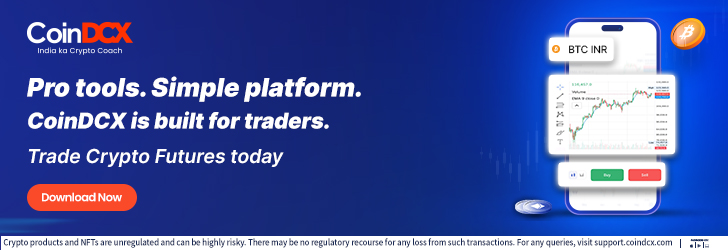Let’s be real. The way we handle money now is wildly different from how our parents did it. Back then, it was chequebooks, envelopes of cash, and banks with marble floors. Now? A couple taps on your phone and boom, rent’s paid, dinner’s delivered, and your Spotify subscription rolls on.
Gen Z grew up with the internet. So it makes total sense that they’ve become the blueprint for how digital spending works in 2025. This isn’t just about convenience, it’s about control, speed, and staying on top of your money game. So if you’ve ever felt like your money vanishes the second it hits your account, this one’s for you.
Let’s break down how Gen Z is managing online spending without losing sleep (or overdraft fees).
Digital Wallets Are the New Wallets
Physical wallets are still a thing but most of us haven’t pulled out actual cash since, what, 2018?
Instead, there’s Apple Pay, Google Pay, PayPal, and even Venmo. Everything’s stored on your phone, encrypted, and just one Face ID scan away from checkout.
Gen Z is all about this. Why? Because it’s fast, secure, and easy to track. You don’t have to remember your card number, you don’t need to carry a bulky wallet, and if you lose your phone, there are layers of protection baked in.
Plus, who wants to touch cash that’s passed through 100 different hands when you could just tap and be done?
E-Gift Cards and Prepaid Cards
This is where it gets underrated. Gift cards, yes, those humble little prepaid codes, are actually lowkey genius when it comes to managing spending.
A lot of Gen Z (and millennials too, to be honest) are using digital gift cards and prepaid cards as intentional spending tools. Think of them as mini budgets with built-in limits. You load them up, use them for what they’re meant for, and you can’t accidentally overspend because, well, the card literally won’t let you.
Going shopping online? Grab a store-specific gift card, like for Amazon, Sephora, or even Target. Want to set boundaries for food delivery? Load up a prepaid Visa or a buy a PayPal Gift Card and use that instead of your actual debit card. It’s a solid way to enjoy stuff without losing control of your budget.
Plus, there’s an added layer of safety. Using prepaid cards keeps your real banking info out of random websites or apps. If anything shady happens, your main account stays untouched.
And for gifting? You can’t really go wrong with PayPal gift cards. They’re flexible, widely accepted, and just feel less awkward than handing someone cash in a card like it’s 1994. Whether you’re shopping for someone who games, shops online, or loves streaming, they’ll find a way to use it. It’s like giving someone the power to choose their own chaos, responsibly.
Budgeting? Yeah, There’s an App for That
Budgeting used to feel like something your parents did in Excel with colour-coded rows and sad vibes. Now? It’s an aesthetic.
Apps like Mint, YNAB (You Need A Budget), and even newer platforms like Copilot or Emma have turned budgeting into something that’s not just practical.
You can set goals (“no more takeout after Thursday”), track subscriptions (“why am I still paying for Paramount+?”), and even get push notifications if you’re overspending. It’s basically like having a money coach in your pocket.
And for the spreadsheet-averse (hello), these apps make managing your money way less stressful.
Buy Now, Regret Later
Buy Now, Pay Later (aka BNPL) has exploded recently, Klarna, Afterpay, Affirm, you name it.
It works like this: You buy something now, split the cost into smaller payments, and stretch them out over a few weeks or months. It feels helpful, especially if you’re trying not to burn through your paycheck all at once.
But here’s the thing: it’s not free money. If you miss payments, you can rack up late fees, or worse, damage your credit. Some people end up juggling five or six BNPL plans at once, and before you know it your bank balance hits zero and you owe Klarna more than you remember spending.
TL; DR: Use BNPL only if you’ve budgeted for it and you’re confident you’ll pay it back on time. No shame in spreading payments but know what you’re signing up for.
Crypto and Digital Investing
Okay, so crypto’s been through some stuff lately. One minute it’s booming, the next it’s tanking. But despite the rollercoaster, a lot of Gen Z still sees value in digital investments.
Apps like Robinhood, Coinbase, and even Cash App have made it super easy to dip your toe into the world of stocks, crypto, or fractional shares. You don’t need a finance degree, you just need an app and a few dollars.
But here’s the golden rule: never invest what you can’t afford to lose. Think of crypto and stocks like spicy food, exciting, but not for every meal.
Gen Z’s Money Values Hit Different
It’s not just about how Gen Z spends, it’s about why. There’s a noticeable shift toward value-based spending. That means supporting small businesses, prioritising sustainability, and choosing brands that actually align with your beliefs.
Whether it’s buying from ethical brands, tipping local artists via Ko-fi, or subscribing to a newsletter from your fave independent writer, money is becoming more of a statement than just a transaction.
Gen Z wants their spending to matter, and honestly, it shows.
Final Thoughts: Money Moves, But Make Them Smart
Online spending isn’t going away, if anything, it’s only getting more baked into everyday life. The goal isn’t to stop spending. It’s to spend with intention, to know where your money’s going, and to make it work for you.
Whether it’s budgeting with apps, using gift cards to stay within limits, or tapping your phone to pay for your overpriced latte, this is digital money done right.
And if you ever feel overwhelmed, just remember: your money should work for you, not the other way around.
You’ve got this. Keep making smart (and maybe slightly impulsive but still kinda responsible) money moves.






